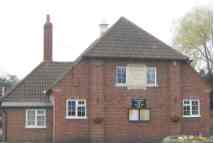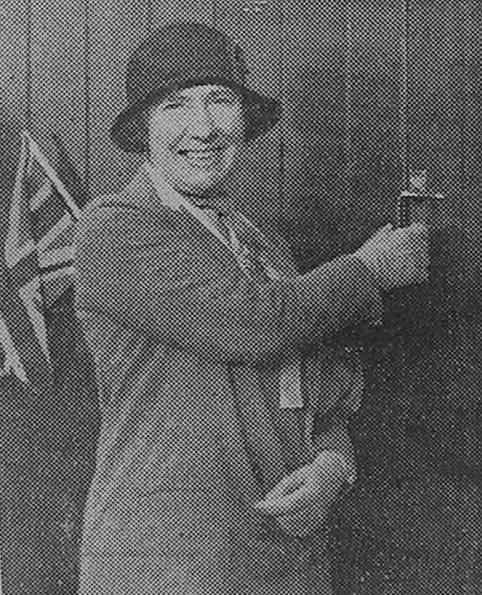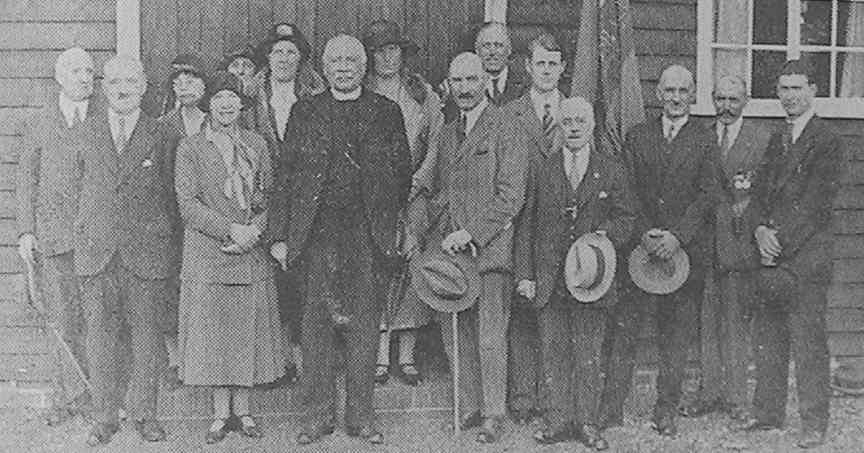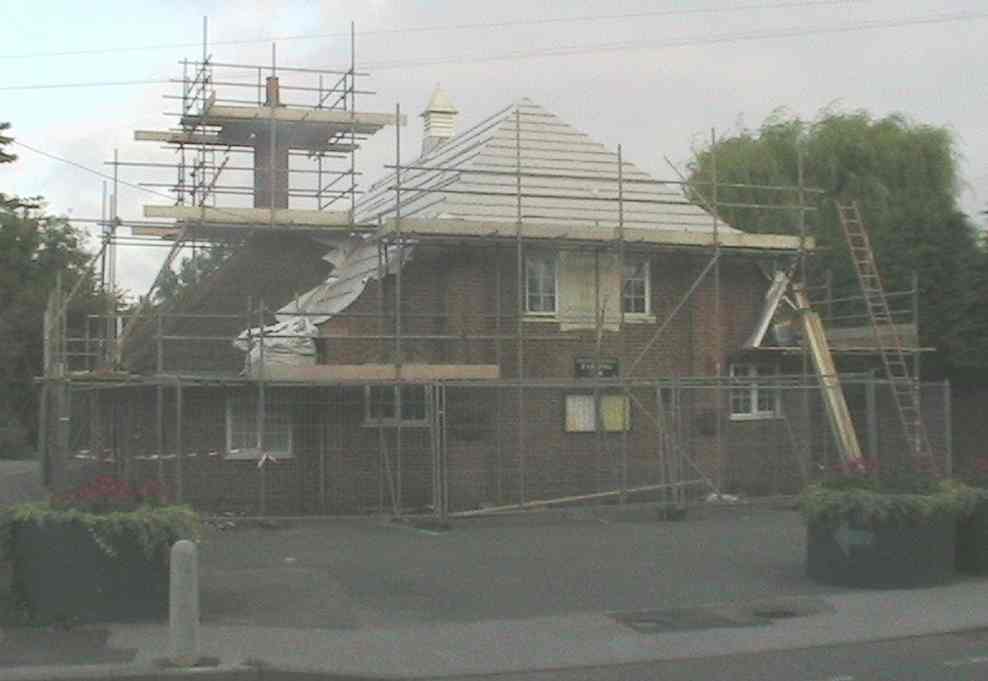
|
Arborfield
|
|
Properties
Related sites:
|
The people of Arborfield used to hold their social
gatherings at the School, but this wasn't ideal, because there wasn't a
separate hall. Through the 1920's there were plans for a Because at the time there were two parish councils (Arborfield and Newland), the hall was to be administered by a separate Management Committee (see the Parish Council web-site and select 'Village Hall'). From the start, it was hoped to extend the main hall rearwards, but to this day, the wooden panelling at the back has remained in place, though there is an extension to accommodate the surgery, waiting room and Parish Council office. Here's how the 'Reading Mercury' reported the opening ceremony in its October 17th issue: ARBORFIELD VILLAGE HALL Opening Ceremony by Miss B. M. Simonds RESULT OF FIVE YEARS’ WORK Arborfield’s new village hall, a well-built structure standing on a
site i For more than five years the business of collecting money by subscription and by means of public events has increased steadily, and the result is that Arborfield has much better provision than many villages can boast of for its social work. The building was designed by Mr. W. H. Howell, F.R.I.B.A, of Reading, and erected by F. J. Milam of Finchampstead. It consists of a new hall, 32 ft by 26 ft, with dressing rooms, kitchen and boiler-house. The walls are brick-built and the roof is tiled. Funds did not permit of any elaboration or ornament, but the building was designed to be in keeping with its surroundings. It has accommodation for 180 and the rear wall has been erected to allow for an extension whichmight bring the accommodation to 250. Almost all of the men employed were from the locality. Prominent Workers Canon J. A. Anderson, the chairman of the committee, who never spares himself in any work for the welfare of his parishioners, has once again earned the gratitude of the whole village by his encouragement and his example in working for the hall, and when Miss Simonds left Arborfield, the building committee were fortunate to find as her successor a secretary as competent and popular as Mr. J. C. P. Allsebrook. Throughout the effort Mr. J. H. Simonds has also been an active worker, taking on the responsibility of treasurer and making good a promised gift of his father, after the death of Mr. John Simonds. The other members of the committee, all of whom assisted very materially in the work, were Mrs. Prescott, Mrs. Allsebrook, Mrs. Verrall, Mrs. Garratt, Captain Hart, Mrs. Crocker, Mr. Rogers and Mr. Duffield.
The late Mr. Simonds’ Interest. Canon Anderson presided at the opening ceremony outside the hall. He said that in his earliest days at Arborfield, people spoke about the need for a village hall, and after the war the need became more pressing than ever. In 1926, as chairman of the parish council, he consulted the late Mr. John Simonds, who was chairman of Newland Parish Council, as to what action should be taken. Mr. Simonds was at once in favour of erecting a hall, provided it was a building worthy of the village, and later Mr. J. H. Simonds informed them that his father would start the fund with £100. Canon Anderson spoke of various efforts that had taken place to raise £1,000 or more. He said that no less than 200 people had taken part, and another £100 was contributed by Mr. Simonds, who also gave the site. "It has been well worth our while to have worked and waited so long to have a hall of a permanent character, and it is something of the ideal that the late Mr. John Simonds set before us from the very first", Canon Anderson added. The Architect, Mr. W. R. Howell, also spoke. He said the building was designed to be in keeping with the village and was not like the flaring cinemas that spoiled the streets of so many towns. It was a building reposeful and useful. The workmen who had been engaged on the building were mostly local men, and they did their work in the spirit of the old English craftsmen; they seemed to take a pride in it, and in doing it as well as could be done. Golden Key for Miss Simonds Mr. Howell then handed to Miss Simonds a golden key with which to unlock the door. After doing so, Miss Simonds said she knew that if the late Mr. Simonds were with them, he would be pleased to see that they had erected such a splendid building. He was anxious that it should be a credit to the village and not an eyesore, and all who had shared in the work could feel that they had helped to build a hall they could be proud of. After prayer, the company gathered in the hall, where their first act was to sing the National Anthem, following which little Ann Bentley presented a bouquet to Miss Simonds. Mr. J. H. Simonds made a statement on the financial position. By the initial effort of the village, it had been possible, he said, to erect and very nearly pay for the village hall. By means of subscriptions and proceeds from various efforts £918 had been raised. This had yielded £71 interest, and another £150 in subscriptions had been promised. In addition to that they would require £50, This could be borrowed from the bank, and he appealed to all to wipe off this debt as soon as possible. In conclusion, Mr. Simonds expressed the thanks of Miss Simonds for the honour they had done her in selecting her to perform the opening ceremony. He regarded it as a compliment to her and to the family. Mr. Alan Bentley proposed a vote of thanks to Miss Simonds for opening the hall, and spoke of the active interest which Miss Simonds had always taken in the life of the village. The hall was decorated with flowers for the ceremony, this being the work of Miss Prescott and Miss Allsebrook. Management Council A management council has been formed to take charge of the hall. It
is representative of various organisations in the villages, as follows:
- [Acknowledgements to Berkshire Newspapers; the photographs were marked 'Collier'.]
There has always been a need to supplement income by fund-raising, to provide improvements, extensions and for maintenance. At the time this article was prepared in August 2008, the Hall was surrounded by scaffolding while the main roof was replaced. The first photo shows the front of the building, complete with concrete flower-tub to protect the car-park. On the left is the boiler-house with its tall chimney, no longer strictly necessary.
The second photo shows the rear extension. It's not possible without extensive tree surgery to try to get the same viewpoint as Mr. Collier enjoyed in 1931, so this view was taken from the other side of the building.
|
||
|
Any Feedback or comments on this website? Please e-mail the webmaster |

 n
the centre of the village given by the late
n
the centre of the village given by the late



